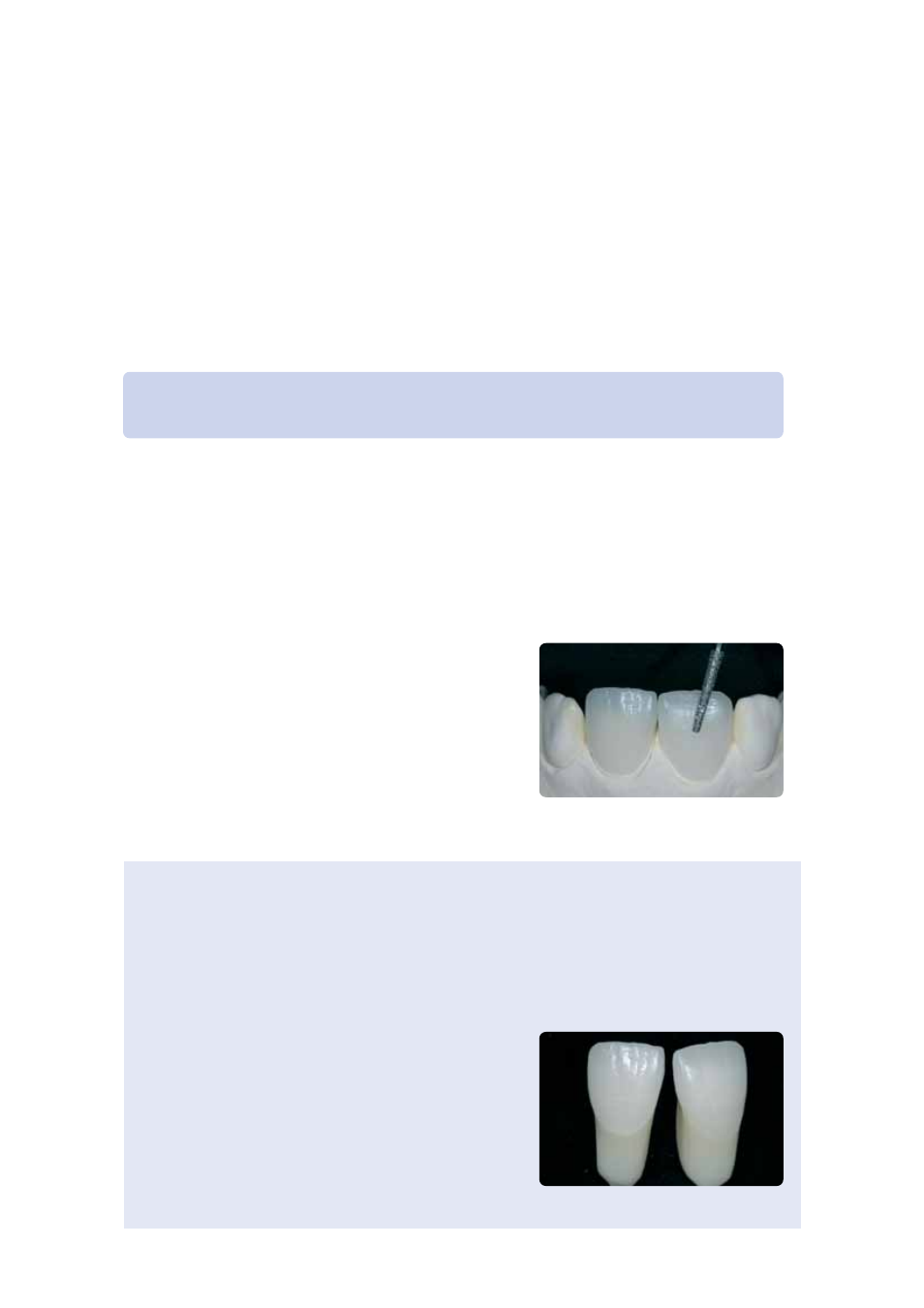Ips empress cad veneers / crowns – stained/glazed – Ivoclar Vivadent IPS Empress CAD Labside User Manual
Page 25

25
If more intensive and excessive shade adjustments are desired, we recommend conducting them in several working steps.
To reproduce the tooth shade easily and reliably, an individual control die may be fabricated using the
IPS Natural Die Material. The IPS Empress Universal Shades and Stains are then applied in a first step and separately fired.
The shade result can be checked after firing. If required, the shade of the restoration may be intensified and adjusted to
the individual patient case by repeated application of the materials. Once the desired shade has been achieved and the
individualized characterizations completed, the glaze firing is conducted.
IPS Empress CAD Veneers / Crowns – stained/glazed
Please refer to the corresponding Operating Instructions and/or Manuals of the respective CAD/CAM system
for further information on the CAD/CAM processing procedure. The instructions by the manufacturer must be
observed.
Finishing
For finishing glass-ceramics, appropriate grinding instruments are indispensable. If the wrong grinding instruments are
used, marginal chipping and local overheating may occur.
The following procedure is recommended for finishing IPS Empress CAD restorations:
– Use only suitable, fine-grained (grain size < 60 µm), ceramic-bonded grinding instruments or diamonds at a speed of up
to 20,000 rpm and little pressure.
– Carefully finish the restoration margins using rubber and silicone polishers
(Speed: <10,000 rpm)
– Overheating the glass-ceramic must be prevented.
– Smooth out attachment point of the holder and take the proximal
contact points into account.
– Carry out individual shape adjustments, if required.
– Design the surface structure somewhat more pronounced, if necessary,
since it will be toned down by the glazing procedure.
Optional
Die fabrication using IPS Natural Die Material
The light-curing IPS Natural Die Material simulates the shade of the prepared tooth. Fabricate a control die of the selected
shade. This control die supports the optimum shade adaptation of the restoration to reproduce the given oral situation.
– Coat the inner surfaces of the ceramic restorations with IPS Natural Die Material Separator and allow it to react for a
short time.
– Apply die IPS Natural Die Material in the corresponding shade to the inner aspects of the restoration using the
IPS Condenser and adapt so that the entire inner aspect is coated and filled.
– Completely fill the restoration cavity and insert an IPS Die Holder into
the material and adapt excess material around the holder. Make sure
that the Die Material is well adapted to the restoration margins and
that no gaps are present.
– Polymerize the IPS Natural Die Material die with a commercial
polymerization light for 60 seconds.
– After polymerization, the die can be finished and or smoothed, if
required.
The control die made of IPS Natural Die Material is the optimum basis
for a true-to-nature all-ceramic restoration.
Design individual shape adjustments and a true-to-nature
surface structure
